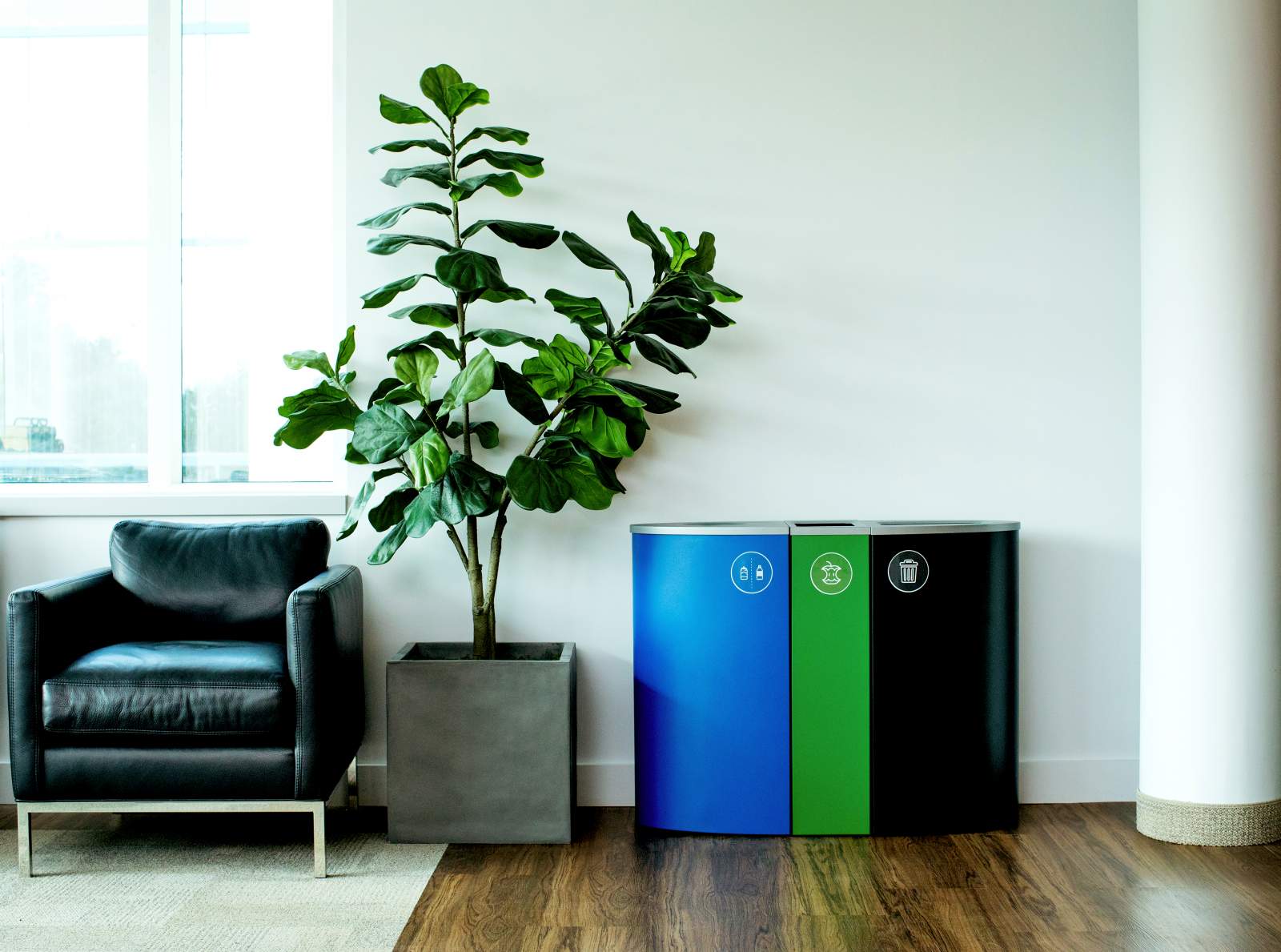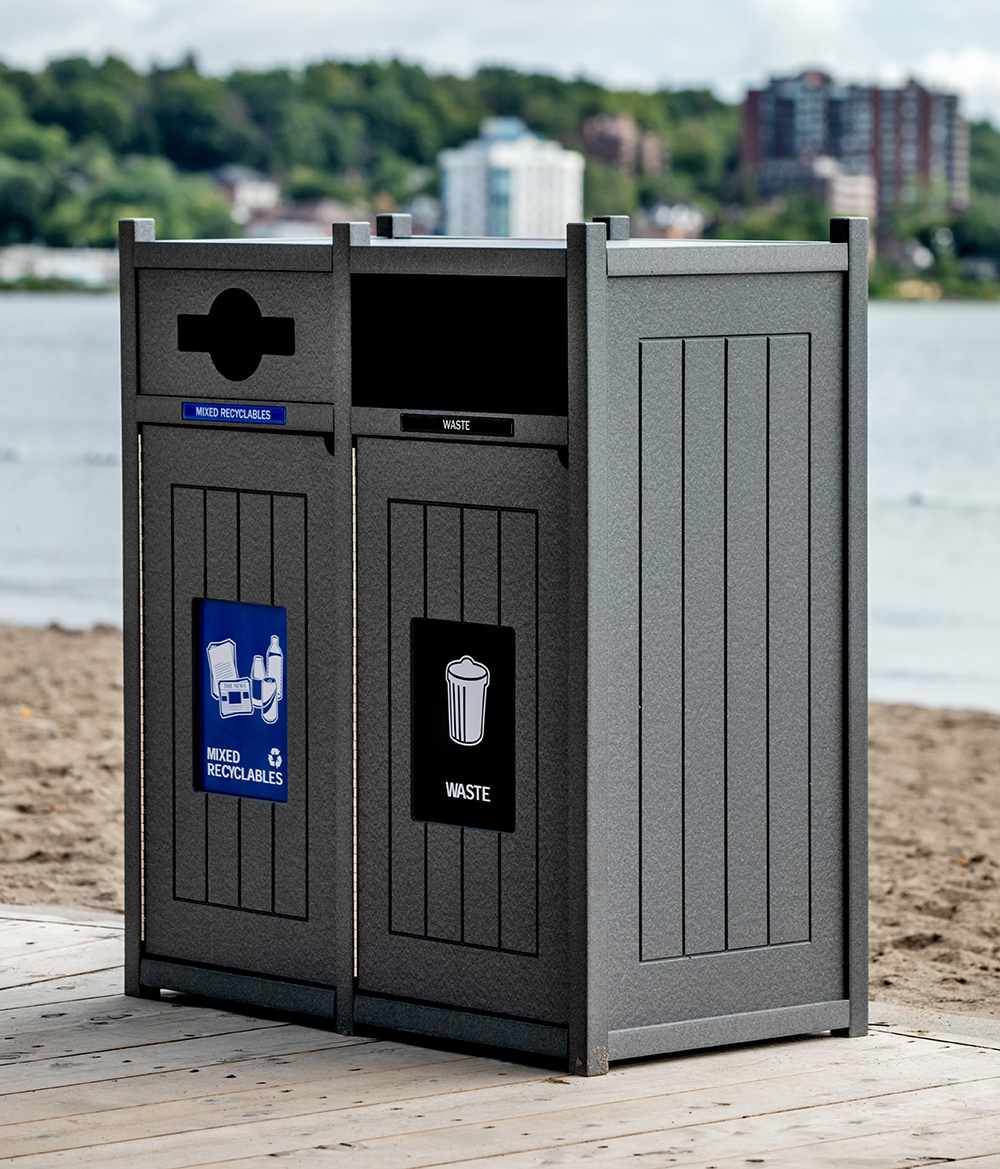A breakdown of the types of recycling & waste containers available and how the definitions of these containers have evolved over the years!
Recycling bins are the most integral part of a waste collection program (for obvious reasons), and it is important to know the types of recycling and waste containers available and how the categorization of these containers have evolved over the years!
Recycling bins, recycle stations, collection containers, waste receptacles—whichever word you currently choose to describe them—come in a variety of different shapes, sizes, materials and are designed for a number of different industries and applications that have specific requirements.
Color coordination, signage, labeling, and restrictive openings are all attributes of bins that encourage participation and increase success. These features should always be high on your priority list when looking at your recycling program. However certain industries may prioritize slightly differently. For example, if the bins are on a College or University campus, clear, colorful signage and labeling are required for source separation to limit stream contamination and increase recycling participation. For an Office setting, the needs are similar, but an impactful design that fits the environment plays a larger role. The office setting may be a smaller setting with everyday users being more familiar with the existing program.
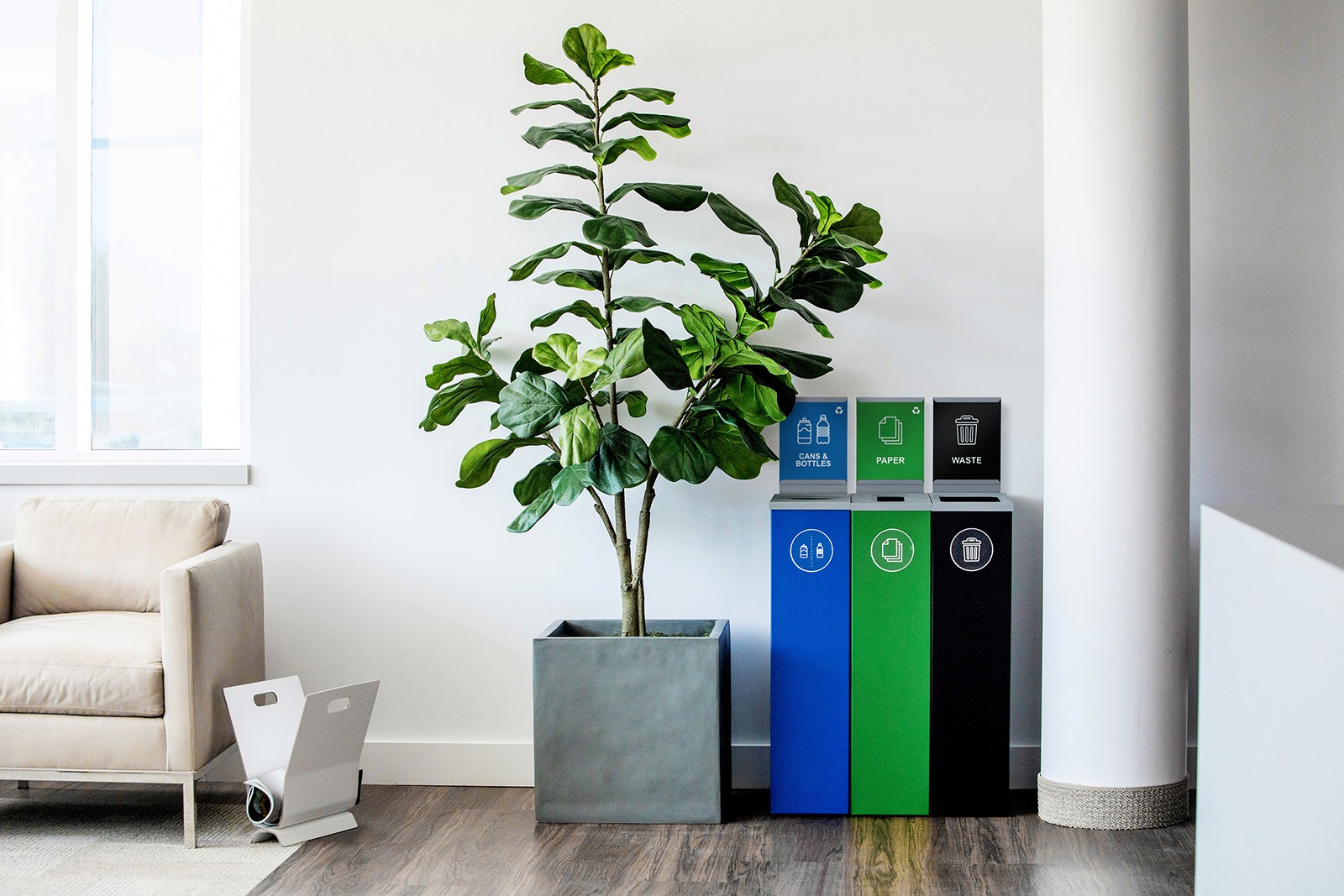
Busch Systems Spectrum Series.
What to expect when you Recycle
As every space is different, every collection program is different. This is why it's important to understand and be educated in what types of recycling & waste container systems are available, so you and your team can maximize efficiency, save money and make a positive environmental impact in your community.
The first level in the most-up-to-date taxonomy of recycling & waste bin classifications starts with four categories and they're based generally on a mix between their location, as well as their purpose.
These categories are: Deskside, Centralized, Transportation and Commercial; as arranged in the illustration below.

To get a better understanding, let's take a deep-dive into each category.
Deskside Bins
(also known as: Personal Bins, Localized Containers)
As stated in the name, deskside bins are containers that are designated for personal use at someone's deskside. Although deskside is the operative keyword, this also stands for under your desk or even on your desk if you want to show off your recycling accumulation (not recommended).
|
IUPUI Deskside Program in partnership with Busch Systems. |
The purpose of these containers is to increase participation rates by making recycling convenient and reduce deskside litter; sometimes implemented to curb that one person in the office running decomposition experiments and fruit fly competitions. While deskside litter smells and is unsightly, to say the least, limited access to a recycling bin is the number one pain point when it comes to individual participation in recycling. Deskside Bins combat this problem by making recycling & waste collection as accessible as possible. Taking this one step further, our R&D team at Busch Systems developed a container (The Hanging Waste Basket) that minimizes the size of the waste stream by clipping to the side of a large recycling stream, therefore promoting more recycling than waste. Little Bin, Big Win. Busch Systems conducted a research study in partnership with IUPUI to assess changes to the recycling rate when a deskside recycling program was implemented in offices on campus. Results showed a drastic improvement when a large recycling bin and small hanging waste basket were implemented deskside. Click here to read more about this case study! |
So, what happens when a Deskside Bin fills to the tippy-top? It's transferred to a centralized recycling and waste station.
Centralized Recycling & Waste Bins
(Also Known As: Centralized Stations, High Traffic Containers, etc.)
Centralized Recycling and Waste Bins are the focal point of any collection program. If you're looking to improve your program, you start by making sure you have the correct centralized stations setup amongst your space indoors and outdoors.
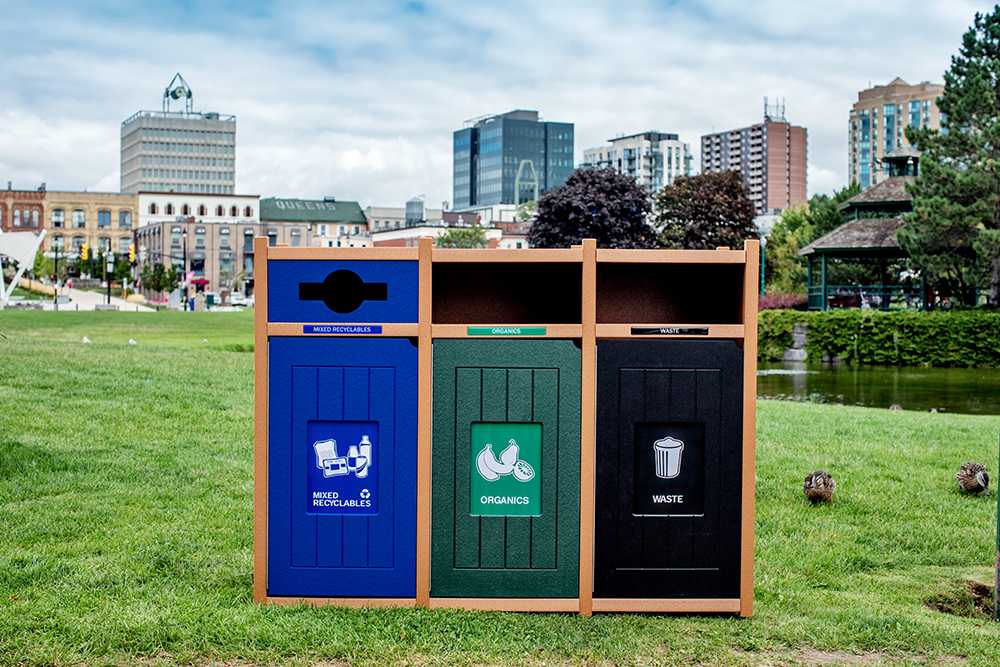
Busch Systems Vision Series: An example of an Outdoor Centralized Station.
As previously mentioned, all deskside bins should inevitably be emptied into your centralized stations, whether it is by the individuals themselves, or the custodial staff. However, centralized stations also collect all other non-deskside recycling and waste directly—making them the most important part of your collection program.
An important aspect to keep in mind with centralized stations is that they should be as consistent as possible throughout your organization. Decide on some standards for your centralized stations and stick to them wherever possible. For example, be sure to color-code your streams, use a consistent configuration of bins, and keep messaging the same on signage throughout your organization.
Centralized recycling and waste bins come in a large variety of different shapes, sizes, and colors and this is because every program's needs are a little different. Also, centralized—while being a great term to describe the flow of waste throughout your program—is still a broad term when considering bin placement. The term centralized, in regards to recycling & waste bins, covers all bin placements in the following, but not limited to, locations:
- Lobby/Foyer Areas
- Hallways
- Concourses
- Boardrooms
- Parks
- Quads
- Beaches
- Stairwells
- Theatres
- Patios
- Restaurants
- Resorts
- Drive-thru's
- Gas Stations
…you get the picture. Any recycling or waste bin (which specifically collects waste, recyclables, compostables or reusable materials) that is not for personal or home use is considered a centralized station. And as one can imagine for each of the above bin placement examples, each station will have a drastically different set of needs.
Using a subway station as an example, the containers in this space may need an extremely high-capacity due to the amount of daily foot traffic. At the same time, they may also need to be bright and have clear concise signage, as the pace of the space…only allows for a very short period for the user to walk by, see the container and dispose of their refuse in the correct stream. And on top of that, it may be wise to maximize the number of streams due to the sheer variety of materials being disposed of.
As you're starting to picture, the process of deciding which centralized station is best for your program can be quite complex. However, if your team spends the time to do this correctly off the hop, you'll eventually be able to reap the social and financial benefits as your program takes off.
Okay, so you've designed the ideal centralized recycling and waste Station for your program and have chosen the best placements throughout your space. People are using these stations, participation rates are high, contamination rates are low and the containers themselves are running at a manageable efficiency rate, woohoo!
But now the bins are almost full, uh oh…how do we transfer all of the material out of the bins? And where are we transferring them to?
Transportation Recycling & Waste Bins
(Also Known As: Transfer Carts, Service Carts, Utility Carts etc.)
The answer to the first question above is transportation recycling and waste bins and as you may presume, these also come in a variety of different shapes, sizes, and colors. Also, you'll start to see options of bins meld into multi-service carts at this stage.
The central purpose of these containers is to transfer material from the centralized stations to the commercial containers that host the waste and recycling before being picked up from your local hauler.
Using the subway station example again, if you're working with high-capacity containers in a high-traffic area, you'll want Transfer Carts that can handle that load. In this situation, you'll usually want to choose a single-purpose container which size is measured in cubic feet or cubic yards—big containers; picture a laundry/towel cart at a hotel.
If your capacity and usage rates are much lower, your options begin to expand a little further. At this point, one can choose to use a multi-service cart with other janitorial equipment (mops, buckets, brooms, etc.) or the option of adding casters (wheels) to your centralized recycling and waste bins becomes an option as well.
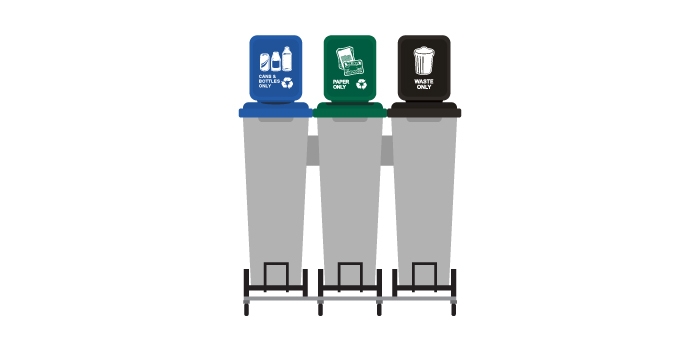
Adding casters to your centralized stations not only gives your program unlimited flexibility but at the same time, saves your program money as you do not need to purchase additional stations; a great concept, again only recommended in mid-to-low traffic and capacity areas.
Commercial Recycling & Waste Bins
(Also Known As: Yard Dumpsters, 20 Yard Dumpsters, etc.)
Alright, so you've chosen to add casters to your Waste Watcher Centralized Stations because they're the best looking, most flexible and completely customizable option to fit for your program. Now it's time to transfer the recycling, waste, and compost to the commercial recycling and waste bins to your collection program endpoint. This is so you can send the material you have successfully source-separated it on its merry way to be recovered at your local recycling or compost facility.
These dumpsters, as referred to most often, are exactly as you're picturing them in your head. They're huge and certainly wouldn't be classified as the best-in-show, but they accept an extremely high capacity of material and are designed to be easily picked up from your local hauler.
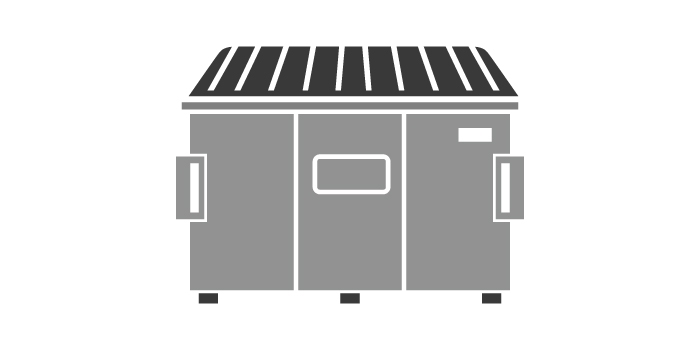
The appropriate definition for commercial in this instance via dictionary.com states the meaning as "suitable for or catering to business rather than private use". That being said, you may be wondering why the industry has reserved the definition for these containers specifically. And the answer, as with centralized recycling and waste bins, is that it is the best possible term to describe their application.
Over 30 years ago, when Busch Systems was manufacturing the original curbside recycling bins (or kerbside bins for our UK readers out there!), there were only two definitions describing centralized containers. Curbside bins and waste bins. Now, as collection programs have evolved, so too have the types of recycling and waste bins. Therefore, the categorization of these containers has evolved into four separate terms: Deskside, Centralized, Transportation & Commercial.
So, when updating, revolutionizing or starting your next collection program, be sure to keep these terms in mind to avoid confusion along the way!
















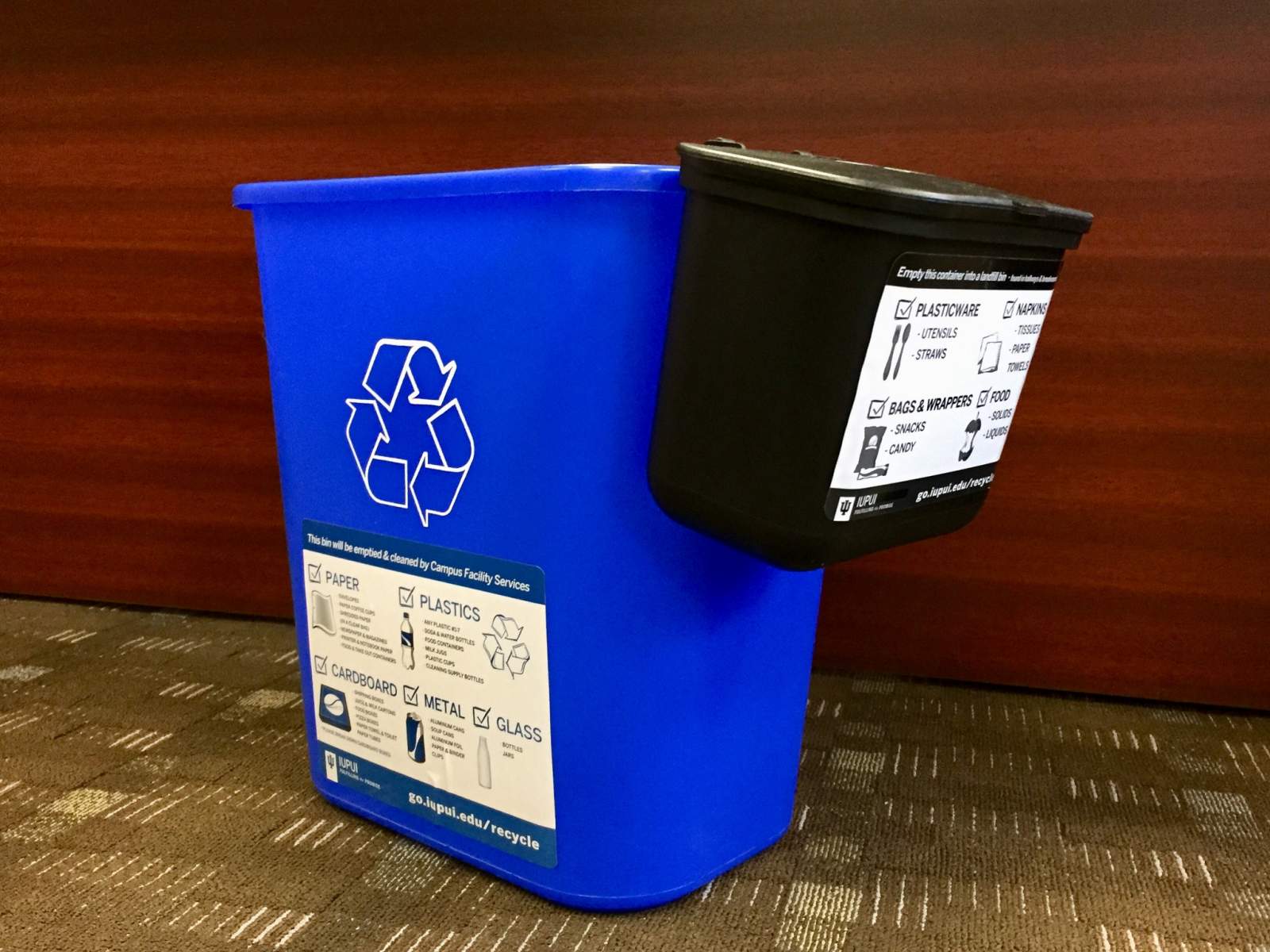
.png)
